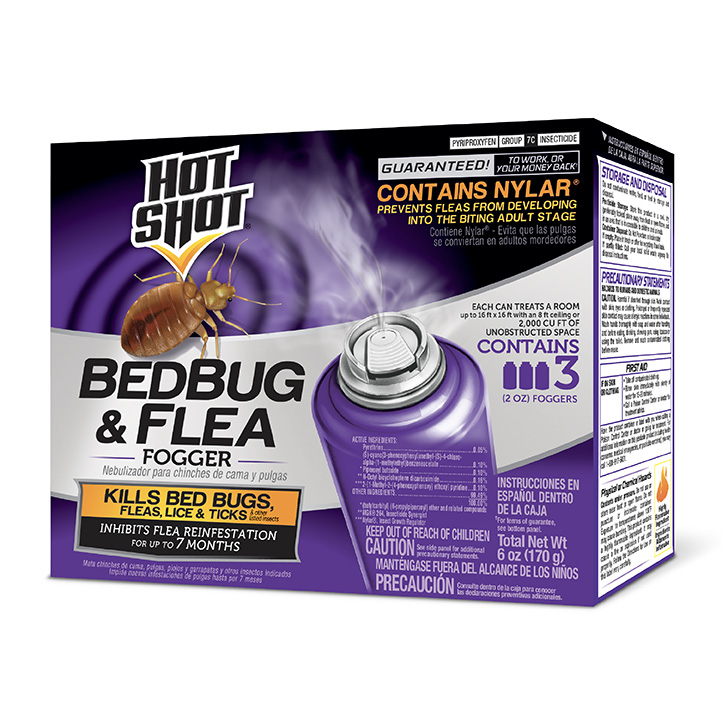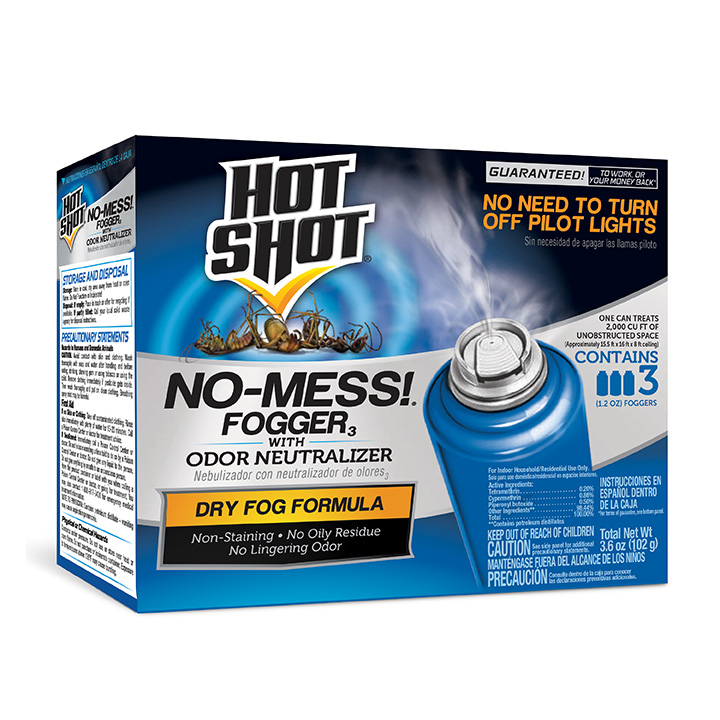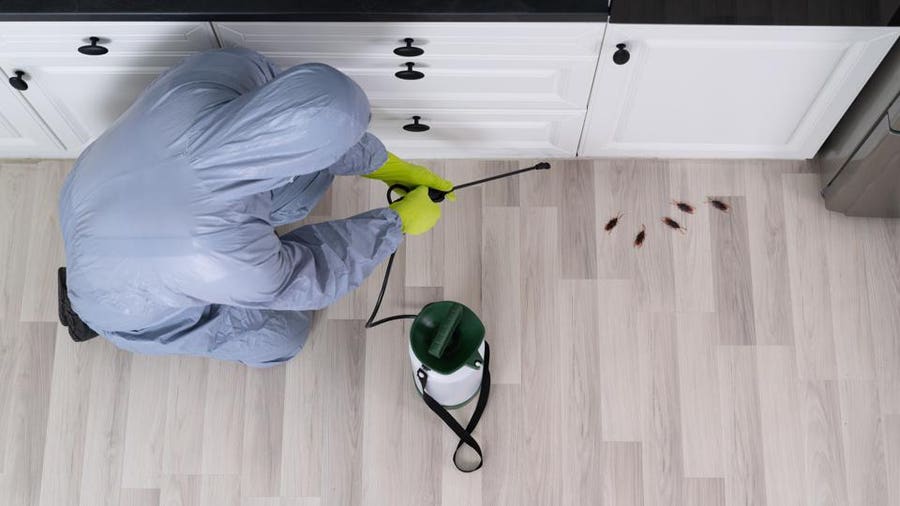After bombing your house for bed bugs, begin by airing out the area. Next, thoroughly clean all surfaces, including floors, walls, and furniture, to remove insecticide residues.
Dealing with a bed bug infestation can be stressful, and the aftermath of chemical treatments adds another layer of concern. Ensuring a safe environment post-bombing requires both caution and thoroughness. Expert guidance recommends opening windows to ventilate and using protective gear during cleanup.
It’s essential to follow directions on the insecticide label, as they provide specific instructions for safe and effective post-bombing practices. The goal is not only to eliminate the pests but also to make your living space safe and comfortable again. Homeowners need to prioritize the removal of any toxic residues and attend to the laundering of fabrics and bedding to prevent skin contact with lingering chemicals. Upholstery, carpets, and any areas where chemicals may have settled also need attention. Taking these steps helps maintain the health and well-being of all household members while ensuring the efficacy of the bug bombing process.

Credit: www.hotshot.com
The Bombing Aftermath
The Bombing Aftermath: Tackling the tidy-up post bed bug bombing feels overwhelming. Yet, it’s crucial to restore your home to a safe zone. Proceed with a step-by-step approach to breathe easy again in a clean, bug-free environment.
Health Safety Precautions
Cleaning after a bed bug treatment involves health risks. Protect yourself first. Wear gloves, masks, and long sleeves.
- Ventilate your home – Open windows and doors wide.
- Avoid direct skin contact with treated surfaces.
- Keep pets and children away until your house is fully cleaned and aired out.
Essential Cleaning Supplies
Gather the right tools for efficient cleaning. Your crucial cleaning arsenal should include:
| Supply Category | Items Needed |
|---|---|
| Personal Protection | Gloves, masks, long-sleeve clothing |
| Cleaning Tools | Vacuum, mops, buckets, garbage bags |
| Cleaning Agents | Soap, disinfectants, laundry detergent |
Start with vacuuming. Focus on mattresses, sofas, and carpets first. Wash all fabrics, like bed linens and curtains.
Wipe down all surfaces with soap and water. Use disinfectants on non-porous furniture.
Dispose of the vacuum bag in a sealed plastic bag. Check every corner for any bug signs.
Initial Steps Post-bombing
Bed bug bombing, also known as fogging, can leave chemicals behind. Once the fog settles, the real cleanup begins. Start with proper ventilation and safety gear before tackling the cleaning process.
Ventilating The Area
First, open all doors and windows wide. This ensures fresh air circulates throughout your home. Use fans to help push out fumes. Keep the area ventilated for at least a few hours before you start cleaning.
Protective Gear For Cleaning
Wear protective gear to safeguard yourself from chemicals. This includes gloves, masks, and long-sleeved clothing. Ensure no skin is exposed to harmful residues during cleanup.
Cleaning Surfaces
After ventilating, clean all surfaces thoroughly. Use a wet cloth to wipe down non-porous surfaces like countertops and tables. For porous surfaces like curtains and upholstery, consider steam cleaning.
Washing Fabrics
Bedding, clothing, and other fabrics should go directly into the wash. Use hot water to kill any remaining bugs or eggs. Dry on the highest heat setting possible.
Vacuuming Floors And Furniture
Vacuum carpets, rugs, and furniture carefully. Pay special attention to crevices and hidden spots. Immediately after, seal and discard the vacuum cleaner bag outside of your house.
Disposing Of Bed Bug Debris
Collect any bed bug debris in sealed plastic bags. Dispose outside of your home to prevent reinfestation. After handling waste, wash hands immediately.
Assessing And Retreating
Finally, inspect your home for any signs of remaining bugs. A second treatment might be necessary. For best results, consult a pest control expert.
Tackling Different Rooms
Bed bug bombing often leaves homeowners with the task of cleaning. Each room presents unique challenges. Effective cleaning after bed bug treatment is crucial. Here’s how to do it.
Prioritizing Bedrooms And Living Spaces
Bedrooms and living spaces require immediate attention after a bed bug bomb.
- Strip all bedding and curtains. Wash in hot water.
- Vacuum floors, including under beds and furniture.
- Wipe down surfaces with a mild detergent solution.
- Dispose of vacuum contents immediately outside.
Ensure all closets are emptied and vacuumed. Pay special attention to corners and baseboards.
Managing Kitchen And Dining Areas Clean-up
Kitchens and dining areas require a thorough approach due to potential food contamination.
| Task | Details |
|---|---|
| Empty Cabinets | Remove all items. Clean shelves with soap and water. |
| Clean Appliances | Focus on stoves, refrigerators, and microwaves. Use appropriate cleaners. |
| Sanitize Surfaces | Use disinfectant on tables and countertops. |
| Dispose of Exposed Food | Throw away any food left out during bombing. |
Replace liners in drawers and shelves. Ensure all spaces are dry to prevent mold.

Credit: www.amazon.com
Focus On Fabrics And Upholstery
Tackling bed bugs involves thorough cleaning, especially of fabrics and upholstery. These areas can harbor hidden pests. Effective sanitation will reduce the chances of a re-infestation. Pay close attention to every detail during this process to ensure these pests are gone for good.
Washing Bedding and CurtainsWashing Bedding And Curtains
Start with bedding and curtains, as these are often close to the infested area. Use the following steps:
- Strip all bed linens and curtain panels.
- Place them in sealed plastic bags to avoid spreading bed bugs elsewhere.
- Wash at the highest heat setting that the fabric can handle.
- Dry on high heat for at least 30 minutes to kill any remaining bugs.
Remember to inspect and vacuum the mattress and bed frame after removing the linens.
Cleaning Sofas and CushionsCleaning Sofas And Cushions
Sofas and cushions require special attention due to their varied materials and complexity:
- Remove all cushions and vacuum every crevice.
- Use a steamer for deep cleaning if the fabric is steam-safe.
- Spot-treat any stains with an appropriate cleaner.
- Allow everything to air dry completely before reassembly.
Consider a professional deep clean for items that cannot be washed at home.
Hard Surfaces And Floor Care
Cleaning your house after a bed bug treatment is crucial to ensure a healthy environment. Hard Surfaces and Floor Care are important areas to focus on. The insects are dead, but you must remove any remaining chemicals and allergens. Let’s go step by step.
Wiping Down Furniture And Countertops
Start by airing out the room. Open windows and doors for fresh air. Wear gloves to protect your skin. You might also want a mask for your nose and mouth.
- Gather cleaning supplies – mild soap, disinfectant wipes, or a water-vinegar solution.
- Remove any debris or dead bugs with a paper towel.
- Clean all surfaces with your chosen cleaning agent. Use a sponge or cloth.
Remember to clean hard-to-reach areas such as under the furniture, behind picture frames, and inside cabinets.
Dispose of the cleaning materials properly. Place everything in a sealed bag.
Sweeping And Mopping Floors
Proper floor maintenance helps remove any remnants from the bug bombing process.
- Sweep the floor to collect any dead bugs and dust.
- Mop your floors with hot, soapy water. An appropriate disinfectant can also be used.
- Rinse the mop frequently to avoid spreading dirt.
For carpets, use a steam cleaner or vacuum with a HEPA filter to trap particles. Make sure to empty the vacuum bag after use and dispose of it in a sealed bag.
Addressing Electronics And Appliances
After bombing your house for bed bugs, attention to your electronics and appliances becomes crucial. These items can harbor toxic residues. Proper steps ensure they remain safe and functional.
Safely Cleaning Electronics
Electronics require careful handling. Begin by unplugging each device. Use a dry microfiber cloth to remove dust and particles. Avoid moisture near any openings or ports. For tough spots, lightly dampen the cloth with isopropyl alcohol. Wipe screens and surfaces gently. Let the electronics air-dry completely before plugging them back in.
Decontaminating Household Appliances
Kitchen and laundry appliances can accumulate debris and pesticide residue. Start by unplugging and removing any detachable parts. Soak these in warm, soapy water. Use a sponge or cloth to clean surfaces. For the interior, a mixture of baking soda and water works wonders. Rinse all components thoroughly. Ensure everything is dry before reassembly.
| Appliance | Cleaning Solution | Tool |
|---|---|---|
| Microwave | Vinegar & Water | Sponge |
| Refrigerator | Baking Soda & Water | Cloth |
| Washer | Soapy Water | Brush |
- Switch off and unplug devices.
- Clean with the right solution.
- Air-dry before reconnecting power.
Items To Discard Or Replace
After a rigorous bed bug treatment, it’s crucial to assess which items are safe to keep and which need tossing. Certain belongings might harbor bed bug eggs or remnants, posing a risk of reinfestation. Identifying and properly disposing of these items is key to maintaining a bed bug-free home.
Identifying Contaminated Items
Start by examining your possessions closely. Look for telltale signs of contamination, like tiny eggs, brownish excrement spots, or shed bed bug skins. Pay special attention to fabrics, as bed bugs prefer to hide in soft materials. Items typically considered for disposal include:
- Heavily infested mattresses and box springs
- Old, cracked furniture with nooks and crannies
- Pillows, stuffed animals, and comforters with significant infestation
- Curtains and clothing that can’t withstand the heat of a dryer cycle
Guidance For Safe Disposal
Disposing of infested items responsibly is essential to prevent spreading the infestation. Seal the items in sturdy plastic bags before moving them outside. Label the bags clearly, warning others of the contents. Follow local guidelines for discarding bulk items to ensure they are handled properly:
| Item Type | Disposal Method |
|---|---|
| Bedding and Clothes | Bag, seal, label, and drop-off at designated disposal sites |
| Furniture | Wrap in plastic, label, arrange for bulk garbage collection |
| Mattresses | Encase in bed bug-proof covers, label, and dispose as per local regulations |
Replacing these items can be costly but is often necessary to eradicate bed bugs completely. Invest in new items only after you are certain the bed bug bombing has been a success. Encasements for mattresses and box springs can help protect the new investments from future invasions.
Prevention And Future Measures
After the challenging process of bombing your house for bed bugs, the next critical step is to establish prevention and future measures. To maintain a pest-free environment, certain strategies can help seal the deal against future infestations. Let’s explore how to fortify your sanctuary and keep those pesky intruders at bay.
Sealing Entry Points For Pests
Bed bugs sneak in through tiny cracks and crevices. Perform a thorough inspection around your home. Look for any openings in:
- Window frames
- Baseboards
- Electrical outlets
Use silicone caulk to seal these spots. Pay special attention to areas where pipes and wires enter walls. These preventative steps create a barrier against re-entry, keeping your home secure.
Regular Cleaning Regime To Deter Bed Bugs
Cleanliness can discourage bed bug infestations. Implement a regular cleaning schedule:
| Task | Frequency |
|---|---|
| Vacuuming | Weekly |
| Washing bedding | Bi-weekly |
| Decluttering | Monthly |
Vacuum rugs and upholstery regularly. Wash and heat-dry beddings and curtains to kill any bed bug eggs. Clutter gives bed bugs places to hide. Keep your space clutter-free.
Professional Cleaning Services
After dealing with a bed bug infestation, your house needs thorough cleaning. Sometimes, the task is too overwhelming or requires expert attention. This is where professional cleaning services come into play. These experts have the experience and equipment to ensure your home is not just clean, but also safe from any lingering pests or chemicals.
Deciding When To Call The Experts
How do you know it’s time to hire professionals? Look for these signs:
- Chemical Residue: Specialized cleaners handle leftover pesticide.
- Infestation Size: Large infestations might need a pro.
- Sensitive Areas: Professionals carefully treat places like kitchens.
What To Expect From A Professional Clean-up
When experts arrive, anticipate the following steps:
- Assessment: They start with an evaluation of your home.
- Deep Clean: They perform a deep clean, especially in infested areas.
- Specialized Equipment: They use tools like HEPA vacuums for safety.
Professional services often offer:
| Service Feature | Description |
|---|---|
| Expertise | Knowledgeable in pest cleanup |
| Safety | They prioritize your health |
| Guarantees | Possibly offer service guarantees |
Professionals also advise on preventing future infestations. Choosing the right cleaning service brings peace of mind after the stress of bed bugs.
Summing Up The Clean-up Strategies
After bombing your house for bed bugs, cleaning up right is crucial. A proper cleanup ensures the effectiveness of the treatment and prevents bed bugs from returning. Follow this guide for a comprehensive clean-up strategy tailored for a bed bug-free home.
Checklist For Post-bombing Cleanup
Post-bombing cleanup can be overwhelming. A checklist helps manage the process. Tackle tasks systematically using the list below:
- Open windows and doors to ventilate the treated area.
- Vacuum every room thoroughly, especially where the bombs were placed.
- Wash all fabrics like bedding, curtains, and clothes in hot water.
- Wipe down all hard surfaces with a disinfectant.
- Discard the vacuum bag or empty the canister outside immediately after use.
- Check and clean hidden spots behind furniture and baseboards.
Maintaining A Bed Bug-free Home
A clean home prevents bed bugs from coming back. Keep your home bed bug-free with these steps:
- Conduct regular inspections for early detection.
- Use protective covers on mattresses and box springs.
- Eliminate clutter to reduce hiding spots for bed bugs.
- Seal cracks and crevices where bed bugs can enter and hide.
- Be cautious when bringing second-hand furniture into your home.
- Consider professional pest control services for periodic inspections.

Credit: www.hotshot.com
Frequently Asked Questions On How To Clean A House After Bombing For Bed Bugs?
What Are The Steps For Post-bed Bug Bombing Cleanup?
To clean after bed bug bombing, first, air out your home by opening windows. Then, vacuum thoroughly, including floors, furniture, and mattress. Wipe down surfaces with a damp cloth. Wash bedding and clothing in hot water. Discard the vacuum bag outside your home.
How Long Should I Wait To Clean After Bombing?
Wait at least two to four hours to allow the insecticide to settle before cleaning. Always check the product label for specific instructions. Proper waiting ensures the pesticide works effectively and reduces exposure risk during cleanup.
Can I Mop Floors After Bed Bug Treatment?
Yes, you can mop floors after bed bug treatment. First, do dry cleaning like vacuuming. Mop the floors with warm water and a regular cleaning solution to remove any chemical residue and dead bed bugs. Always wear gloves to protect your hands.
What Precautions Should I Take When Cleaning After Fumigation?
Wear protective gloves and a mask to avoid direct contact with insecticides. Avoid touching treated surfaces with bare skin. Keep children and pets away during cleanup. Carefully read and follow the pesticide label’s safety instructions for the best practices.
Is the Same Cleaning Process Used for Both the House and Yourself After Bed Bugs?
When dealing with a cleaning bed bug infestation prevention, it’s important to note that the cleaning process for your house and yourself will be different. For your home, thorough vacuuming and washing bedding is essential. For yourself, focus on showering and washing your clothes at a high temperature to eradicate any bed bugs.
Conclusion
Eradicating bed bugs through a thorough bombing process is only half the battle. The real triumph lies in diligent cleaning post-treatment. Remember, discard vacuum bags right away and wash textiles in hot water. Consistent follow-up ensures a bed bug-free home.
Maintain vigilance and enjoy your restored peace of mind.
{ “@context”: “https://schema.org”, “@type”: “FAQPage”, “mainEntity”: [ { “@type”: “Question”, “name”: “What are the steps for post-bed bug bombing cleanup?”, “acceptedAnswer”: { “@type”: “Answer”, “text”: “To clean after bed bug bombing, first, air out your home by opening windows. Then, vacuum thoroughly, including floors, furniture, and mattress. Wipe down surfaces with a damp cloth. Wash bedding and clothing in hot water. Discard the vacuum bag outside your home.” } } , { “@type”: “Question”, “name”: “How long should I wait to clean after bombing?”, “acceptedAnswer”: { “@type”: “Answer”, “text”: “Wait at least two to four hours to allow the insecticide to settle before cleaning. Always check the product label for specific instructions. Proper waiting ensures the pesticide works effectively and reduces exposure risk during cleanup.” } } , { “@type”: “Question”, “name”: “Can I mop floors after bed bug treatment?”, “acceptedAnswer”: { “@type”: “Answer”, “text”: “Yes, you can mop floors after bed bug treatment. First, do dry cleaning like vacuuming. Mop the floors with warm water and a regular cleaning solution to remove any chemical residue and dead bed bugs. Always wear gloves to protect your hands.” } } , { “@type”: “Question”, “name”: “What precautions should I take when cleaning after fumigation?”, “acceptedAnswer”: { “@type”: “Answer”, “text”: “Wear protective gloves and a mask to avoid direct contact with insecticides. Avoid touching treated surfaces with bare skin. Keep children and pets away during cleanup. Carefully read and follow the pesticide label’s safety instructions for the best practices.” } } ] }Related posts:

I’m MD Tanvir, and I bring years of expertise gained from working closely with pest control companies to the forefront. My journey in the industry has inspired me to launch Bug Battler, a platform aimed at equipping people with the know-how to combat pests autonomously. Through Bug Battler, I aim to empower individuals with practical insights to tackle pest infestations effectively.

